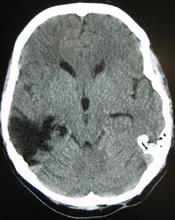Small StepsJust as no two people are exactly the same; no two traumatic brain injuries can be faithfully identical either. The process of recovery is difficult to predict since each individual's road to recovery is diverse and challenging. However, by staying informed, following an approved multi-step process, and remaining committed to the right rehabilitation team, families can help optimize the condition of their loved one's life. Every year thousands of people sustain a disabling TBI and are abruptly forced into the unsympathetic world of rehabilitation, given that the sooner recovery begins - the better the outcome. Recuperation becomes a life-long journey for many and it consists of many small steps over a long period of time. A severely injured person with a brain injury typically requires between 5-10 years of intensive rehabilitation with long-term follow up. (Wilson, 4) Families immediately need to choose a path for their loved one's life.
Consequently, an understanding of the recovery process is essential when making this decision. "TBI costs the country more than $56 billion a year, and more than 5 million Americans alive today have had a TBI resulting in a permanent need for help in performing basic daily activities."(NINDS, 1) Anyone can acquire a TBI at any point in their lifetime; the survivors depend on their families to support them and decide what may be best. For the survivors who cannot reach full recovery, life becomes a permanent process of adjustments and accommodations.
Brain damage can happen in a number of ways, but most commonly with oxygen deficiencies or impacts. Damage to the nerve fibers deep in the central part of the brain, which normally keeps a person awake and alert, results in the most obvious of symptoms - coma. The result of the damage; destroyed brain cells, brain cells...


